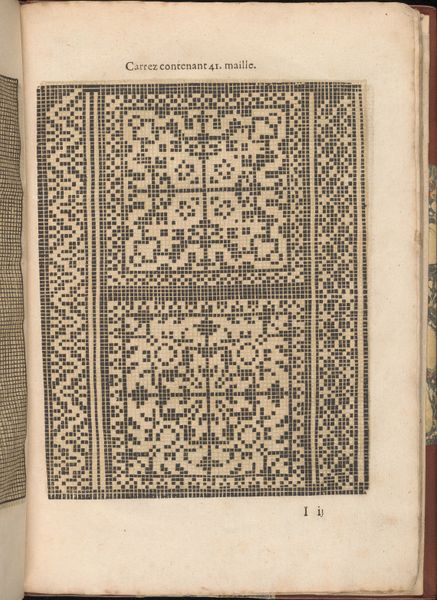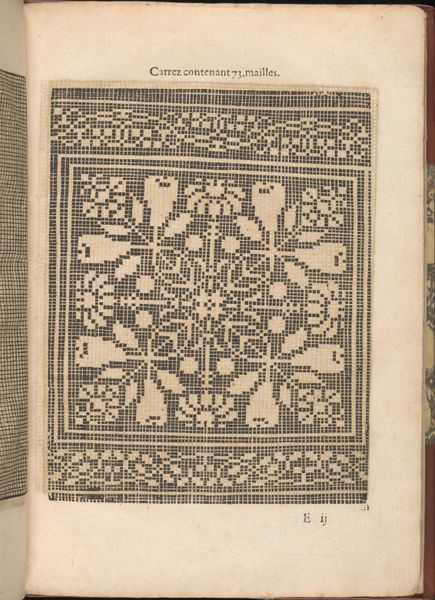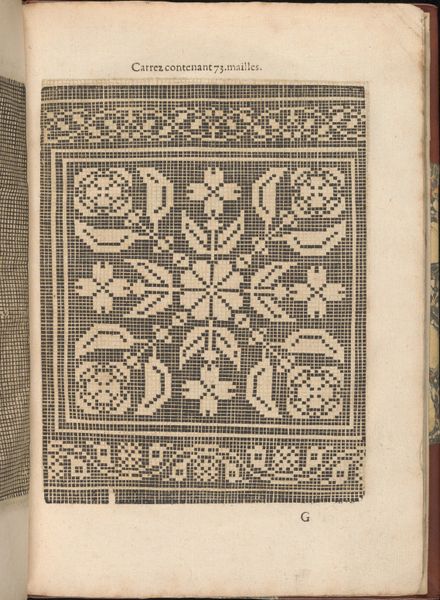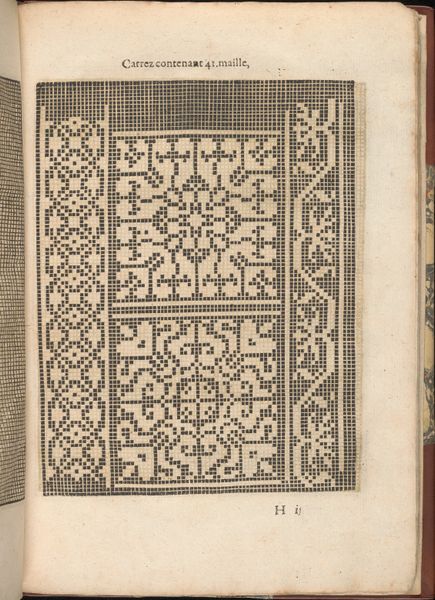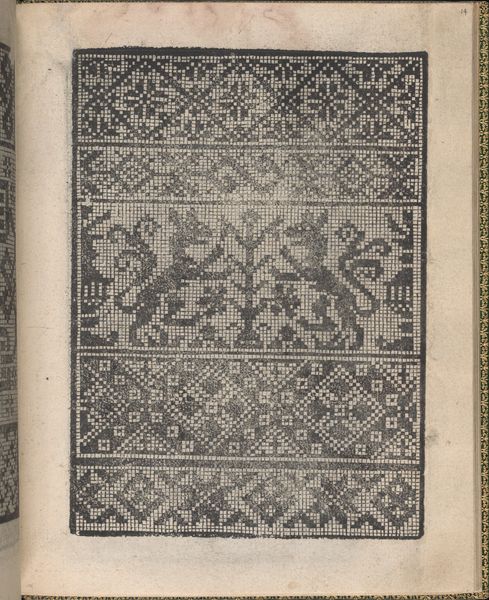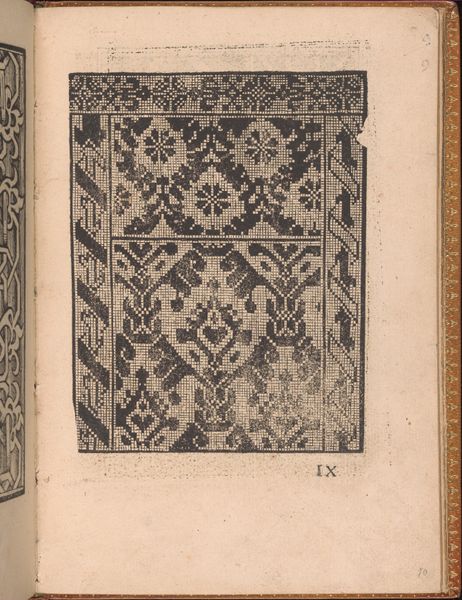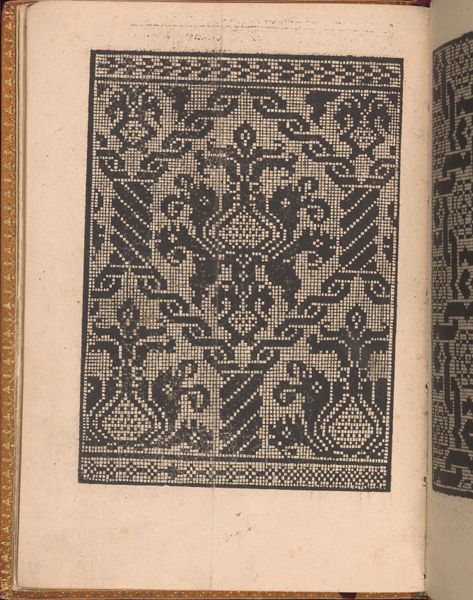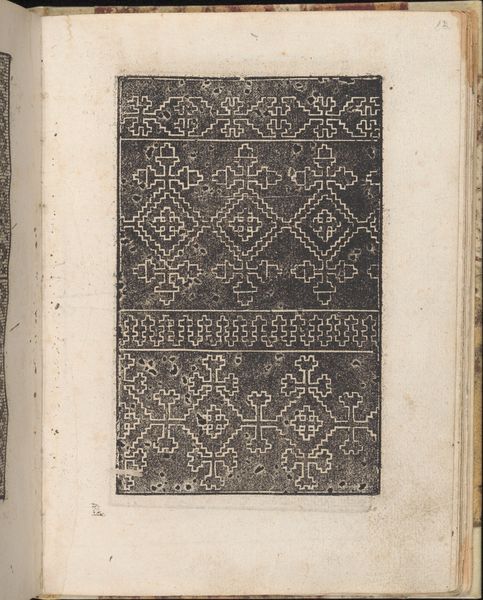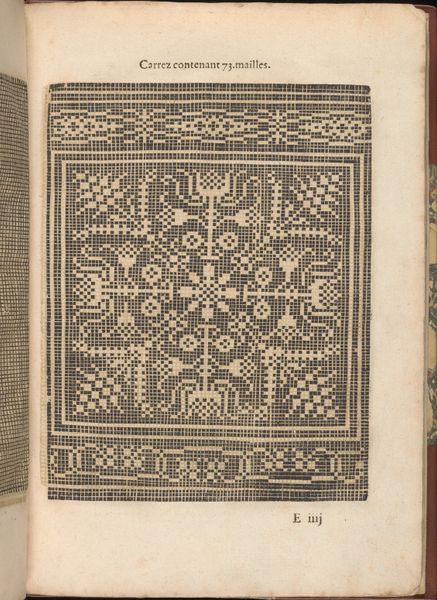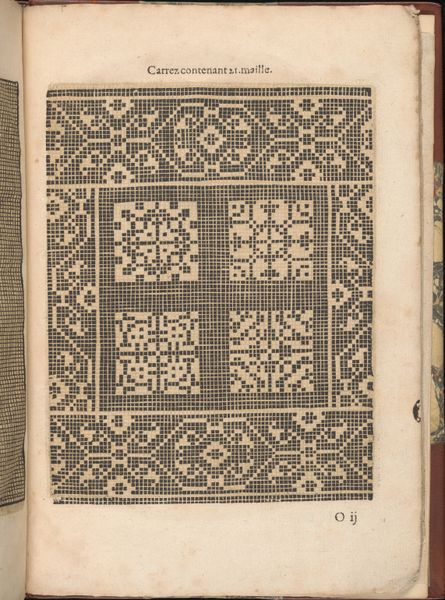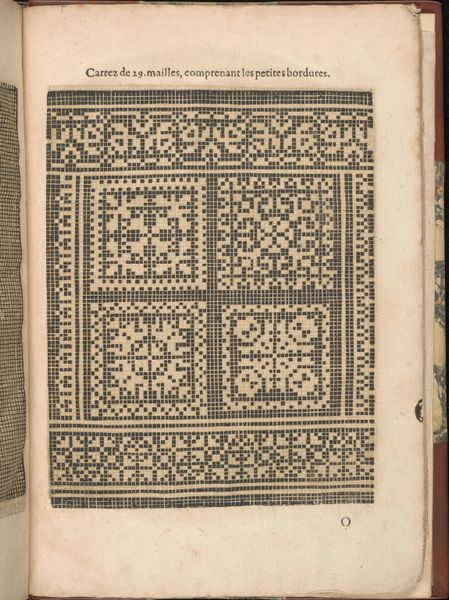
Les Secondes Oeuvres, et Subtiles Inventions De Lingerie du Seigneur Federic de Vinciolo Venitien, page 39 (recto) 1603
0:00
0:00
drawing, ornament, print, intaglio, engraving
#
drawing
#
ornament
#
ink paper printed
# print
#
book
#
intaglio
#
pattern
#
engraving
Dimensions: Overall: 9 7/16 x 6 1/2 in. (24 x 16.5 cm)
Copyright: Public Domain
Curator: Here we have a page, specifically page 39 recto, from Federico de Vinciolo's "Les Secondes Oeuvres, et Subtiles Inventions De Lingerie," printed in 1603. It resides in the Metropolitan Museum of Art. Editor: Immediately, I'm struck by its dense, almost digital look. The pixelated quality, even though it's obviously not digital, gives it a fascinating tension between the historical and the contemporary. Curator: Indeed! This pattern book, printed using intaglio—an early form of engraving—provided designs for lacemaking and embroidery. Each tiny square represents a stitch, a material reality meticulously planned. Editor: It's amazing to think about the hands that would have poured over this page, translating these flat, printed squares into tactile, three-dimensional lace. The labor involved is immense, transforming relatively cheap materials into high-value items. Curator: The patterns themselves possess an elegant, restrained beauty, don't you think? Each motif, painstakingly rendered, hinting at the complex geometric foundations underpinning so much of nature’s design. There’s something almost meditative about the repetitive nature of both the pattern and its execution in thread. Editor: Meditative, yes, but also deeply connected to global trade. These lace designs fuelled a luxury industry dependent on imported materials and skilled artisan labor. What looks purely ornamental reveals the engine of early modern capitalism. Curator: A powerful point. And beyond economics, I think the designs speak to a desire for refinement, a wish to impose order and beauty on the everyday, to elevate functional textiles into objects of art. Editor: Absolutely. It underscores the blurred boundaries between craft, art, and industry. By looking at the materials, tools, and social contexts, we get a richer understanding of the choices artists like Vinciolo made and how his work operated within the world. Curator: Ultimately, reflecting on Vinciolo’s piece allows one to view intricate human connection through artistry from ages past. Editor: And it reminds us that what looks decorative on the surface is often deeply connected to the very fabric of society, both literally and figuratively.
Comments
No comments
Be the first to comment and join the conversation on the ultimate creative platform.
